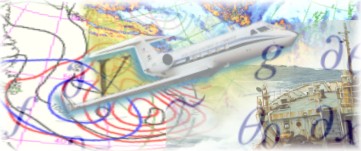

|
|
|
|
|

|
||||

|
||||||||||||||
|
||||||||||||||
|
|
||||||||||||||
|
The Fronts and Atlantic Storm Track (FASTEX) project addresses several open scientific questions relating to atmospheric cyclone depressions forming in the North-Atlantic ocean and reaching the west coast of Europe. They bring there most of the water and soften
the seasonal contrasts, but they are also the cause of numerous
costly damages when they take the shape of storms. These pages are about the first years of the FASTEX project. They concentrate on the key event of this phase, the occurrence of a major field experiment in January and February 1997. |
||||
|
||||
|
The specific objectives of the field operations were to gather data on the cloud systems by combining dropsondes and airborne Doppler radars and, above all, to perform these flights on a system previously sampled at earlier stages. In other words, FASTEX as a field programme aimed at collecting data on cyclone full life-cycles. Both these goals have been reached. The data obtained in this way has been organized into a Data Base and scientists from anywhere can access it right here. The detailed organization of the core of the cyclones is accessible. The project has also produced a new climatology of cyclones, the first real time implementation of adaptive observation and its assessment as a mean of making certain the forecast of damageable cyclogenesis. The study of the objectives relating to clouds is continued under the project FASTEX Cloud System Study. Curious about storms: see what it is like from a ship in another animation. |
||||
![]()
|
|
|
|
|
|
|
fastex-dba@cnrm.meteo.fr for questions or comments |
|
|